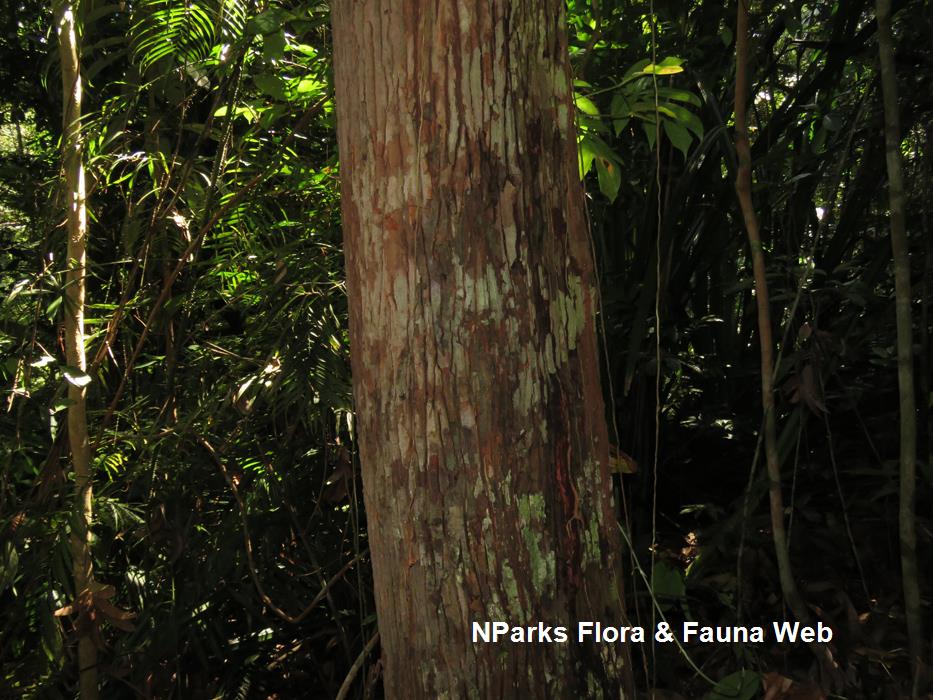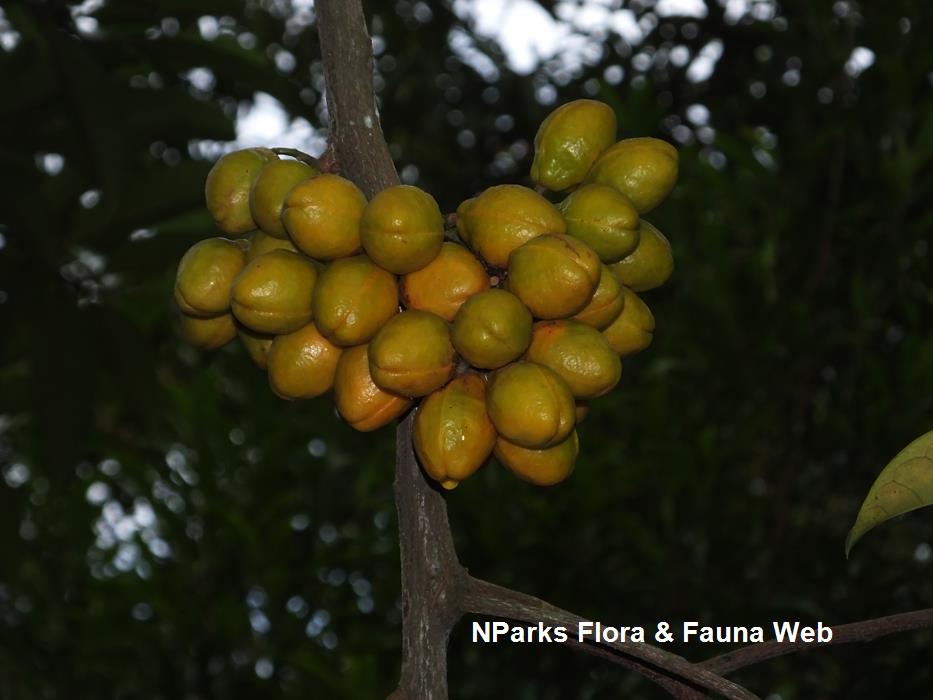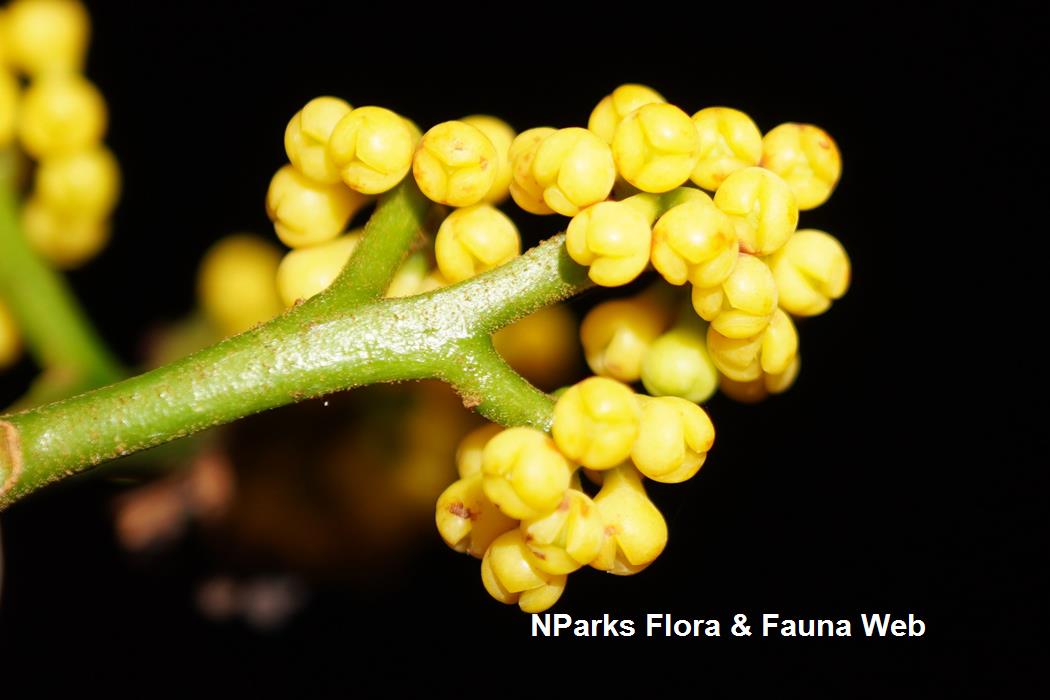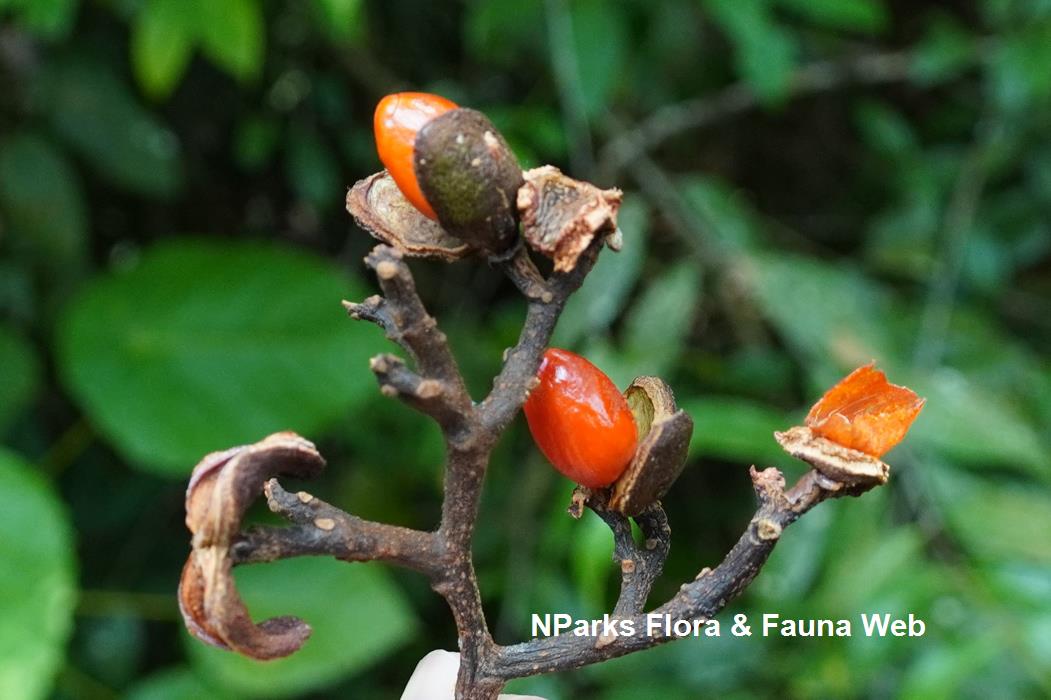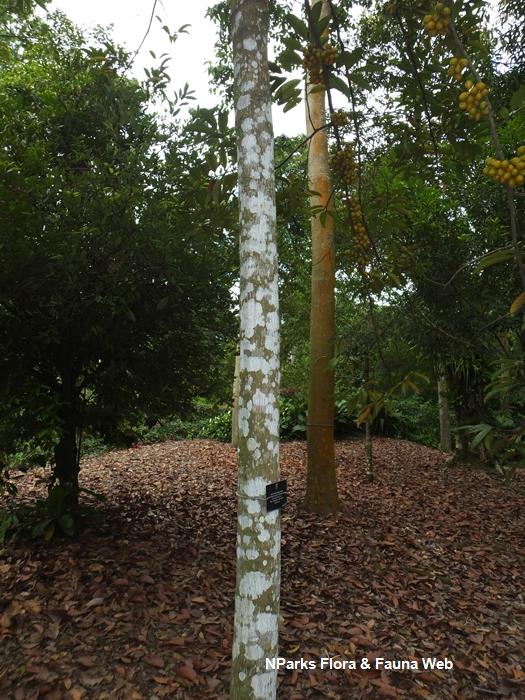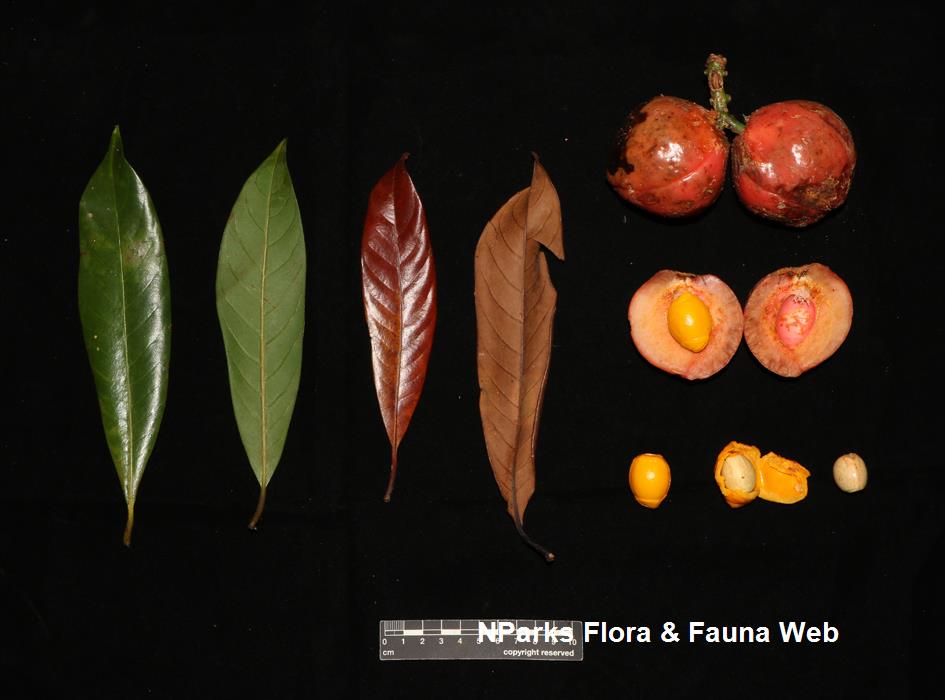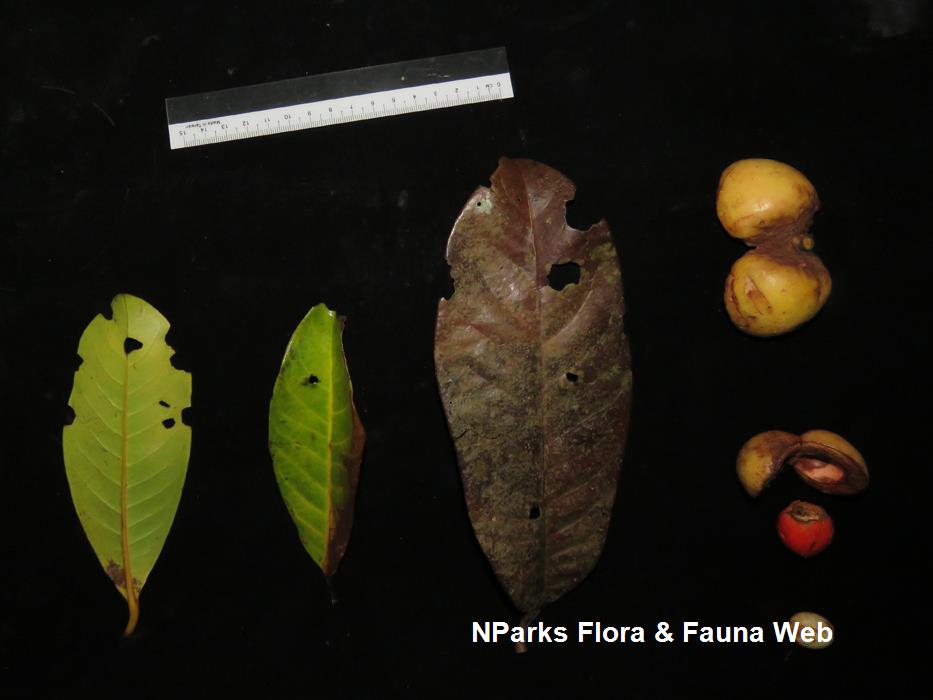
Name
Classifications and Characteristics
| Plant Division | Angiosperms (Flowering Seed Plants) |
|---|---|
| Plant Growth Form | Tree (Big (>30m)) |
| Lifespan (in Singapore) | Perennial |
| Mode of Nutrition | Autotrophic |
| Plant Shape | Irregular |
Biogeography
| Native Distribution | Sumatra, Peninsular Malaysia, Singapore, Borneo, and the Philippines |
|---|---|
| Native Habitat | Terrestrial (Primary Rainforest, Freshwater Swamp Forest) |
| Preferred Climate Zone | Tropical |
| Local Conservation Status | Native to Singapore (Vulnerable (VU)) |
Description and Ethnobotany
| Growth Form | It is a tree up to 40 m tall. |
|---|---|
| Foliage | Its alternate, stalked leaves possess leaf blades that are thickly membranous to papery, egg-shaped-oblong to oblong-lance-shaped, veins distinctly raised above, light brown or chocolate-brown and hairless below, and 7–28 by 2.5–9 cm. |
| Flowers | The species is dioecious with individual trees producing either male or female flowers. Its flowering shoot (inflorescence) has sparse to dense woolly hairs and is 0.6 mm long. Its male inflorescence is 4–20 by 3–12 cm, and contains flowers in up to 8-flowered clusters. Its female inflorescence is up to 8 cm long. The male or female flowers are hairless or gradually becoming so, jade-green, turning to yellow when mature, and its male flowers are smaller than its female flowers. |
| Fruit | Its fruiting clusters (infructescences) contain 1–6 fruits each. Its fruits are partially round or ovoid, hairless, and are 1.9–6 by 1.4–5 cm. |
| Habitat | It grows in lowland forests, freshwater swamp forests, ridge-top forests, and heath forests, up to 1,100 m altitude. It occurs locally in Bukit Timah Nature Reserve, Central Catchment Nature Reserve (Bukit Kallang, Mandai Forest, and Nee Soon Swamp Forest), and Chestnut Avenue. |
| Associated Fauna | Its flowers are insect-pollinated. The bright red arils are eaten by mammals and hornbills. |
| Cultivation | It can be propagated by seed. |
| Etymology | Horsfieldia, named after Dr. Thomas Horsfield (1773–1859), an American botanist who explored in the Malesian islands; Latin poly, many; Latin sphaera, globe or ball, referring to the species’ ball-like fruits |
| Ethnobotanical Uses | Others: It has horticultural potential as a park tree. |
Landscaping Features
| Landscaping | It may be suitable for planting along roadsides or in parks. |
|---|---|
| Desirable Plant Features | Ornamental Flowers |
| Landscape Uses | General, Parks & Gardens, Small Gardens |
| Thematic Landscaping | Bird & Wildlife Garden |
Fauna, Pollination and Dispersal
| Fauna Pollination Dispersal Associated Fauna | Bird-Attracting (Fruits) |
|---|---|
| Pollination Method(s) | Biotic (Fauna) |
| Seed or Spore Dispersal | Biotic (Fauna) (Vertebrates (Other Mammal)) |
Plant Care and Propagation
| Light Preference | Full Sun, Semi-Shade |
|---|---|
| Water Preference | Lots of Water, Moderate Water |
| Plant Growth Rate | Moderate |
| Rootzone Tolerance | Moist Soils, Waterlogged Soils (Drains Site) |
| Propagation Method | Seed |
Foliar
| Foliage Retention | Evergreen |
|---|---|
| Mature Foliage Colour(s) | Green |
| Mature Foliage Texture(s) | Papery, Raised / Sunken Veins |
| Foliar Type | Simple / Unifoliate |
| Foliar Arrangement Along Stem | Alternate |
| Foliar Attachment to Stem | Petiolate |
| Foliar Shape(s) | Non-Palm Foliage (Lanceolate, Elliptical, Oblong) |
| Foliar Venation | Pinnate / Net |
| Foliar Margin | Entire |
Non - Foliar and Storage
| Branch Angle (wrt vertical) | Horizontal |
|---|---|
| Trunk Type (Non Palm) | Woody |
Floral (Angiosperm)
| Flower & Plant Sexuality | Unisexual Flowers , Dioecious |
| Flower Colour(s) | Yellow / Golden |
|---|
| Flower Grouping | Cluster / Inflorescence |
Fruit, Seed and Spore
| Mature Fruit Colour(s) | Cream / Off-White |
|---|---|
| Mature Fruit Texture(s) | Smooth |
| Fruit Classification | Simple Fruit |
| Fruit Type |
Image Repository
Others
| Master ID | 30002 |
|---|---|
| Species ID | 4311 |
| Flora Disclaimer | The information in this website has been compiled from reliable sources, such as reference works on medicinal plants. It is not a substitute for medical advice or treatment and NParks does not purport to provide any medical advice. Readers should always consult his/her physician before using or consuming a plant for medicinal purposes. |


